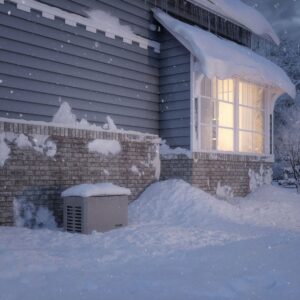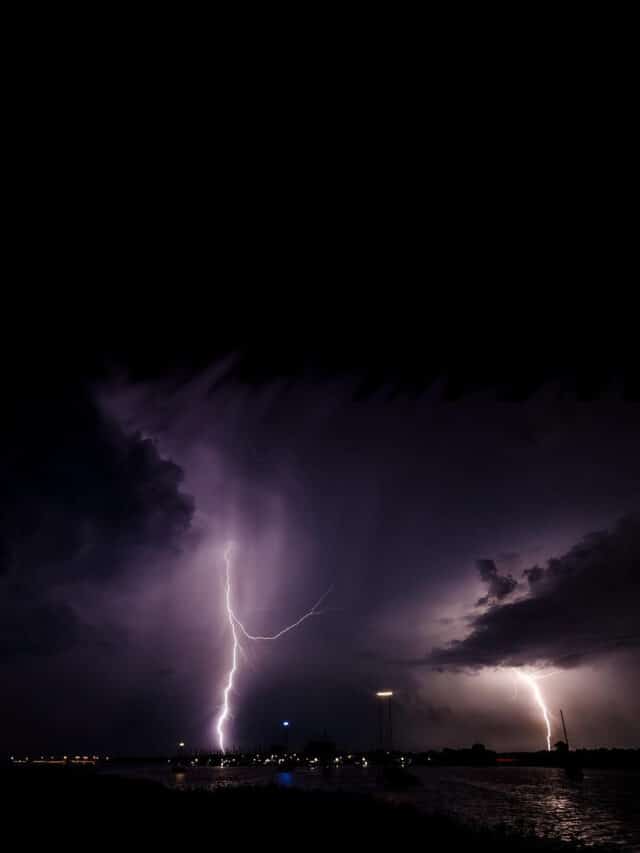The North American Cold Wave in January of 2014 brought frigid temperatures to most of the United States. From Montana to Illinois to Maine, Polar Vortex cold gripped the region with temperatures well below zero.
Winter Outages Require Additional Precautions when Using a Generator
 The United States recorded 2014 as one of the coldest and snowiest winters in recent memory. The number of winter-weather-related power outages probably set a few records. Major ice storms plunged large portions of the southern half of the country into darkness, while snow and ice pummeled the East Coast and Midwest with snow and ice.
The United States recorded 2014 as one of the coldest and snowiest winters in recent memory. The number of winter-weather-related power outages probably set a few records. Major ice storms plunged large portions of the southern half of the country into darkness, while snow and ice pummeled the East Coast and Midwest with snow and ice.
One storm cut power to a million utility customers, some of whom waited days for restoration. Lack of heat caused at least one death. Damage to homes from outage-related flooding or freezing is always a problem during winter outages.
Related: 4 Unexpected Things You’ll Miss During a Winter Power Outage
Even though we can point at specific winters, such as the winter of 2013-2014, as exceptionally severe, every winter has events with wide-reaching effects. The south and southeast appear especially vulnerable to ice storms and storms with a winter mix of rain, sleet, and snow. Nor’easters hit the Northeast as massive cyclones that bring wet, heavy snow. Hurricane Sandy brought up to three feet of snow to Appalachia. One storm in the Cascades brought 105 inches of snow in a single event.
Note: Install Carbon Monoxide Detectors in ALL the living areas of your home. Don’t run a generator without one.
Backup Generator Use
 The most common solution to a power outage, regardless of the season, is a generator. The safest, easiest option is a Home Standby Generator. Permanently installed, standby systems continuously monitor the utility power and automatically start and run within seconds after detecting an outage. An automatic transfer switch isolates the home from the utility lines before it connects generator power to the home’s circuit breaker panel. When the utility restores power, the process reverses and, after a cooldown period, the generator shuts down.
The most common solution to a power outage, regardless of the season, is a generator. The safest, easiest option is a Home Standby Generator. Permanently installed, standby systems continuously monitor the utility power and automatically start and run within seconds after detecting an outage. An automatic transfer switch isolates the home from the utility lines before it connects generator power to the home’s circuit breaker panel. When the utility restores power, the process reverses and, after a cooldown period, the generator shuts down.
Related: Standby Generators Protect Your Home During Winter Power Outages
Most home standby generators run on either propane or natural gas, but some diesel models are also available for locations where propane or natural gas is unavailable as an option.
Portable Generators are another option. They are not automatic, but even lower capacity models can handle a few appliances. Fuel is a concern, but gasoline is not the only choice. Propane and natural gas are readily available. Propane is much easier to store than gasoline and has a nearly infinite shelf life.
Connect a portable directly to appliances with extension cords, or bring power to select circuits in your home with a manual transfer switch. Using a switch is much safer and easier than using extension cords, and comes with the added benefit of supplying power to your furnace. A manual transfer switch installation is simpler than an automatic transfer switch, and homeowners with enough electrical experience can manage the job.
Standby Safety
 Installation by a qualified and experienced installer will eliminate most standby generator safety issues. No portable generator can beat the convenience and reliability of a standby system. When the power goes out, the generator starts and begins supplying power to the house—often in less than 30 seconds. No fuel to transport or store. Forget standing in the rain to hook up the portable. No one is going to walk off with a 500-600 pound generator.
Installation by a qualified and experienced installer will eliminate most standby generator safety issues. No portable generator can beat the convenience and reliability of a standby system. When the power goes out, the generator starts and begins supplying power to the house—often in less than 30 seconds. No fuel to transport or store. Forget standing in the rain to hook up the portable. No one is going to walk off with a 500-600 pound generator.
The installer will select a location based on criteria set by the manufacturer and by local building codes. Safety issues with this type of home backup generator are relatively rare.
Remember to keep the generator top, vents, and exhaust clear of snow and ice.
Related: Cold Weather Kits and Winter Maintenance for Standby Generators
During extended outages, the generator may require service. Shut the generator down daily to check and top off the oil—never overfill. Follow the manufacturer’s guidelines for maintenance intervals or partner with a local service dealer for proactive maintenance.
Keep a supply of maintenance kits and maintenance supplies, such as oil and filters. Shut the generator down for maintenance and follow the manufacturer’s safety steps to ensure it won’t start or attempt to start during servicing.
Never allow children to play on or around the generator.
Diesel standby units require refueling at regular intervals. Shut the unit down for refueling and follow all safety precautions.
Portable Generator Safety
 Portable generator users are at risk for a number of safety hazards, especially in wet, icy, or snowy winter conditions. Read the owner’s manual. Follow all safety instructions. Note the safety decals on the generator and heed their warnings and advice.
Portable generator users are at risk for a number of safety hazards, especially in wet, icy, or snowy winter conditions. Read the owner’s manual. Follow all safety instructions. Note the safety decals on the generator and heed their warnings and advice.
Related: Is Your Portable Generator Ready for Winter Storms
Back feeding is extremely dangerous. Never connect a generator to an appliance outlet. A backfeeding cord, called a ‘suicide cord’, has two male ends. Trip over the cord and when it falls out of the receptacle, it carries enough current to kill. Backfeeding can cause fires, and it can endanger utility line workers or neighbors.
In most places, backfeeding is illegal. Homeowners that backfeed are liable for any injuries or deaths caused by backfeeding. Insurance companies may refuse to pay on claims filed for injuries resulting from a backfeeding generator.
Never operate a portable generator indoors or inside an enclosed space, including a garage or shed. Even if the doors and windows are open, the deadly exhaust fumes can kill within minutes.
Keep the generator a minimum of 10 feet away from the house and away from vents, windows and doors. Even a small opening can allow enough carbon monoxide to enter the home to cause illness or death..
Related: Portable Generator Use During Winter Storm Power Outages
Shut the engine off and allow it to cool before refueling. Follow maintenance schedules and keep maintenance supplies on hand.
Store fuel in containers made for fuel storage. Only store fuel in well-ventilated locations and follow local laws for fuel storage. Many jurisdictions limit the amount of gasoline stored at a residence.
Connect extension cords and generator cords with the generator off and the circuit breaker in the off position. After connecting cords at the generator, start the generator and turn the breaker to the “On” position after it warms up. Finally, connect your appliances one at a time starting with the heaviest load.
Understand when and how you should ground your portable generator. Read the manual.















